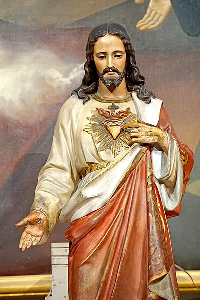Christians are called to know and follow Jesus, not just some representation of Him in their (or someone else's) mind.
Reformed leaders, especially Huldrych Zwingli and John Calvin, actively eliminated imagery from churches within the control of their followers, and regarded the great majority of religious images as idolatrous.
-Wikipedia Art in the Protestant Reformation and Counter-Reformation
Whether iconoclasm was good is debatable for another day but the intent was sincere to keep us from being led astray. Sentimentality can be a distraction from truth.
There is significant evidence that Jesus was not a carpenter as commonly believed, but a stone mason. See the article pitch in this site Jesus was a Stone Mason for a brief argument of that case.
Instead of trying to prove the point beyond a shadow of doubt, let us accept the premise and entertain how that may change our image of the most significant person of human history.

Question 1
If Jesus' trade was to make things from stone, how might that change the temptation to "command these stones to become bread" (Matthew 4:3,6) ?
Question 2
There have been many heartfelt associations at Easter of the irony of Jesus the carpenter being nailed to wood.
Ignoring that, what can we take away from the (probably) shaped stone rolled over his grave?
Question 3
They tried to push Jesus off a cliff but were unable. (Luke 4:29-30) The reason why probably is about destiny and providence.
Do you think it makes sense that perhaps the reason how is that years as a stone mason gave Him more physical strength than scribes (etc)?
Question 4
Centuries of European history cultivated an image of Jesus as a European noble: lanky, tall, and gentle.
However years as a stone mason perhaps made him stocky, bold, and familiar with coarse humour.
Does this make sense?
How does that change what He said or your image of how it was delivered?
